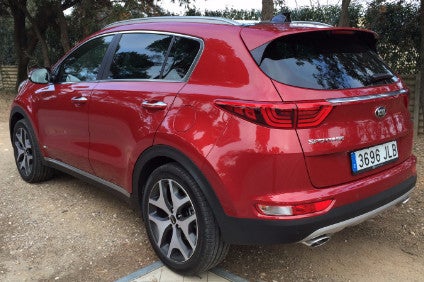
Domestic sales by South Korea’s five main automakers continued to grow strongly in March, by 11.7% to 148,848 units from 127,216 units a year earlier, according to data released individually by the vehicle manufacturers.
The data does not include sales by South Korea’s low-volume commercial vehicle manufacturers, including Tata-Daewoo and Daewoo Bus Corporation, which typically account for up to 2% of the domestic market combined.
Also not included in the data are sales of imported vehicles, which accounted for close to 15% of the total vehicle market in South Korea in 2015.
The rebound last month follows a number of important new model launches in the previous two months which helped bring buyers back into the market.
The government also re-introduced last year’s temporary 1.5% sales tax discount at the end of January, which had expired at the end of last year, in response to a sharp sales decline that month. The discounted sales tax will continue until June to help support first half 2016 domestic sales growth.
First quarter sales increased by 6.9% to 365,772 units, from 342,083 units in the same period of last year.

US Tariffs are shifting - will you react or anticipate?
Don’t let policy changes catch you off guard. Stay proactive with real-time data and expert analysis.
By GlobalDataGlobal sales among the country’s ‘big five’ automakers declined by almost 1% to 794,505 units in March, from 801,997 units a year earlier, reflecting weak overseas sales. In the first quarter of the year, global sales fell by 5.3% to 2,050,724 units, from 2,166,163 units a year earlier.
Overseas sales fell by 4.3% to 645,657 units in March from 674,781 units a year earlier. First quarter volumes were 7.6% lower at 1,684,952 units, from 1,823,482 units, with weak sales in some key markets, such as China, Russia and the Middle East, more than offsetting strong growth in North America
Hyundai Motor‘s global sales fell by 0.9% to 432,878 units in March, from 436,884 units a year earlier, with weak overseas sales holding back the company’s overall performance. First quarter global sales were down by 6.4% at 1,107,369 units, reflecting particularly weak demand in key overseas markets including China and Russia.
Hyundai’s domestic sales continued to grow in March, however, by 7.2% year-on-year to 62,166 units. This helped lift first quarter sales to 160,862 units, driven by strong demand for the new Avante subcompact and SUVs such as the Tucson and Santa Fe.
Overseas sales fell by over 2% year-on-year to 370,712 units in March, resulting in 946,251 units in the first quarter, with buoyant demand in the US more than offset by sharp declines in developing markets such as China, Russia and the Middle East.
Kia Motors‘ global sales fell by 3% to 268,236 units in March, compared with 276,656 units in the same month of last year – driven mainly by strong domestic demand. First quarter global sales were down by 6.1% at 705,089 units.
Domestic sales rose by over 19% year-on-year to 50,510 units last month, driven by strong demand for the new K7 passenger car and for SUVs, pushing up first quarter sales to 128,125 units.
Overseas sales declined by 7.1% to 217,726 units in March, which the company attributed to slowing global economic growth and rising competition affecting output at overseas plants in particular. First quarter overseas sales amounted to 577,251 units.
GM Korea‘s global sales continued to improve in March, by 3.4% year-on-year to 56,144 units from 54,305 units a year earlier, on strong domestic sales.
Cumulative first quarter sales were 3.2% higher at 149,948 units after a negative start to the year. The data does not include exports of CKD kits for assembly overseas.
Domestic sales continued to rebound last month, by close to 28% year-on-year to 16,868 units, reflecting strong demand for the Spark small car which accounted for 9,175 sales. Overseas shipments of CBUs fell by 4.4% to 39,276 units, however.
Renault-Samsung‘s global sales rebounded by 13.5% to 24,237 units in March after declining in the previous two months, according to data released by the company. The sharp turnaround was driven by strong domestic sales of the newly launched SM6 passenger car. Last month’s recovery helped lift first quarter global sales by 1.5% to 54,583 units.
Domestic sales jumped by over 70% year-on-year to 10,235 units in March after declining sharply in the previous month. Sales of the SM6 alone amounted to 6,751 units. This more than offset an 8.7% decline in overseas sales to 14,002 units.
Ssangyong Motor, owned by Mahindra & Mahindra, reported a 1.1% rise in South Korean factory sales to 13,010 units in March – up from 12,870 units a year earlier, reflecting strong domestic demand for the Tivoli SUV. First quarter sales were up 2.7% to 33,666 units.
Domestic sales increased by 17.5% to 9,069 units last month, but exports – excluding CKDs – were more than 23% lower at 3,941 units after growing strongly in the previous month.
South Korean carmakers: domestic/overseas sales by brand, March 2016
Sources : www.AsiaMotorBusiness.com, industry sources.



